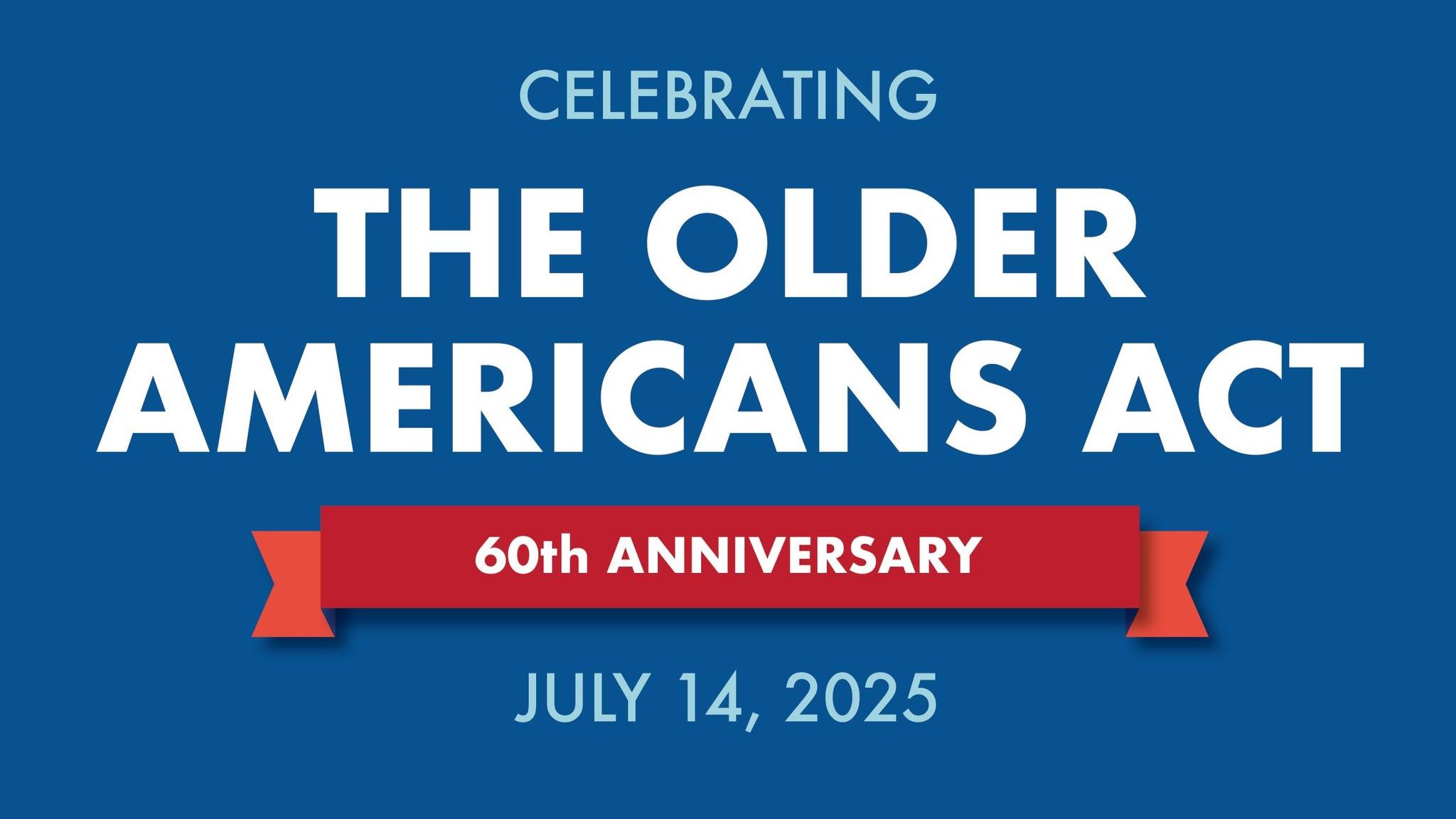Celebrating 60 Years of the Older Americans Act

By: Michelle Matter
Today marks the 60th anniversary of the Older Americans Act (OAA), a bold and visionary law that reshaped how our country cares for its older adults. While programs like Social Security and Medicare helped lay the foundation for income and healthcare security, the OAA went a step further. It was the first time the federal government acknowledged that growing older isn’t just a personal journey, it’s a community responsibility.
What made the OAA so groundbreaking is that it didn’t just respond to emergencies, it built infrastructure. Senior centers, transportation services, caregiver support, and nutrition programs became essentials. It shifted aging services from charity to public responsibility. The Act also acknowledged the everyday realities of growing older, including loneliness, isolation, mobility challenges, and the desire to remain independent. Most importantly, it created a national network to address those needs. That framework has helped generations of older adults age with dignity, choice, and community.
In my opinion, one of the most significant and lasting impacts of the OAA has been its nutrition programs. This isn’t just about food, though the meals themselves are critical for older adults’ health and independence. Home-delivered meals offer lifelines to those who are homebound, while congregate meal programs provide more than nourishment, they foster connection. I’ve seen firsthand how participants not only enjoy the meals but also find purpose in helping serve them. That sense of contribution and belonging can be just as important to well-being as the nutrition itself.
I had the unforgettable experience of sitting in the House Gallery in 2016 when the OAA was reauthorized. Watching that vote, I felt a deep sense of pride in our country’s commitment to older adults. But so much has changed since then. By 2030, every Baby Boomer will be 65 or older. For the first time in U.S. history, older adults will outnumber children under five, and they’ll be more diverse, racially, culturally, and economically, than ever before. Many will grow older without traditional family support. The number of people living to 100 is projected to quadruple over the next 30 years. These are not distant possibilities, they’re fast-approaching realities that will shape every aspect of our society, from housing and healthcare to the workforce and transportation systems.
Future reauthorizations of the OAA must reflect the realities of today’s aging population. This means expanding support for solo agers. It also requires integrating digital literacy into aging services to help older adults stay connected, informed, and engaged. Equally important is continuing to invest in caregivers, particularly the family members and friends who take on caregiving roles, often without training, support, or recognition.
We must also acknowledge and address long-standing gaps in housing, transportation, and community infrastructure. Building age-friendly communities, places that welcome people of all ages and abilities, isn't just a nice idea. It's essential to ensuring that we all can live with purpose and connection, no matter our age.
The Older Americans Act has served our country well for 60 years. As we look ahead, we must ensure it continues to evolve, honoring its legacy while reimagining what aging can look like in the decades to come.

